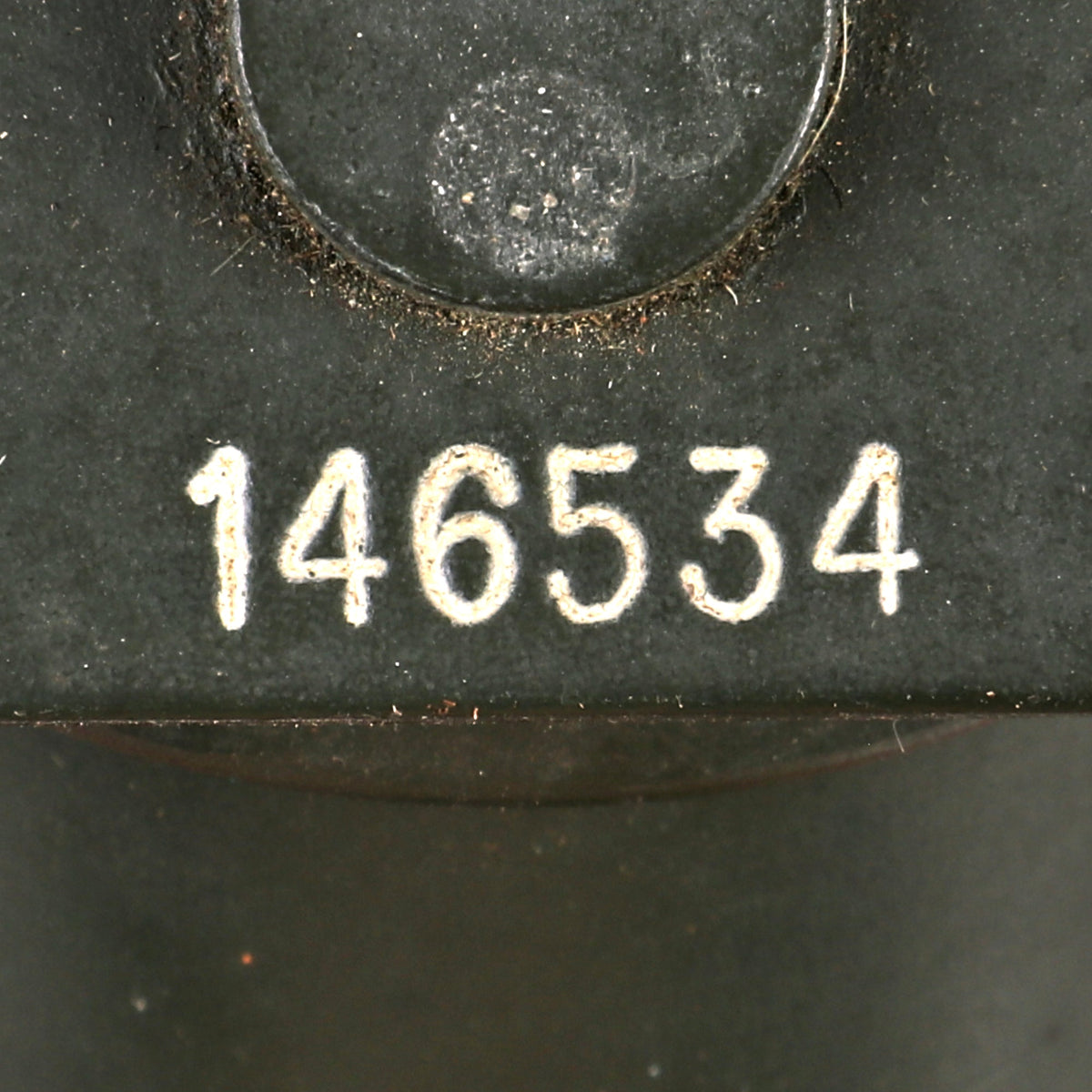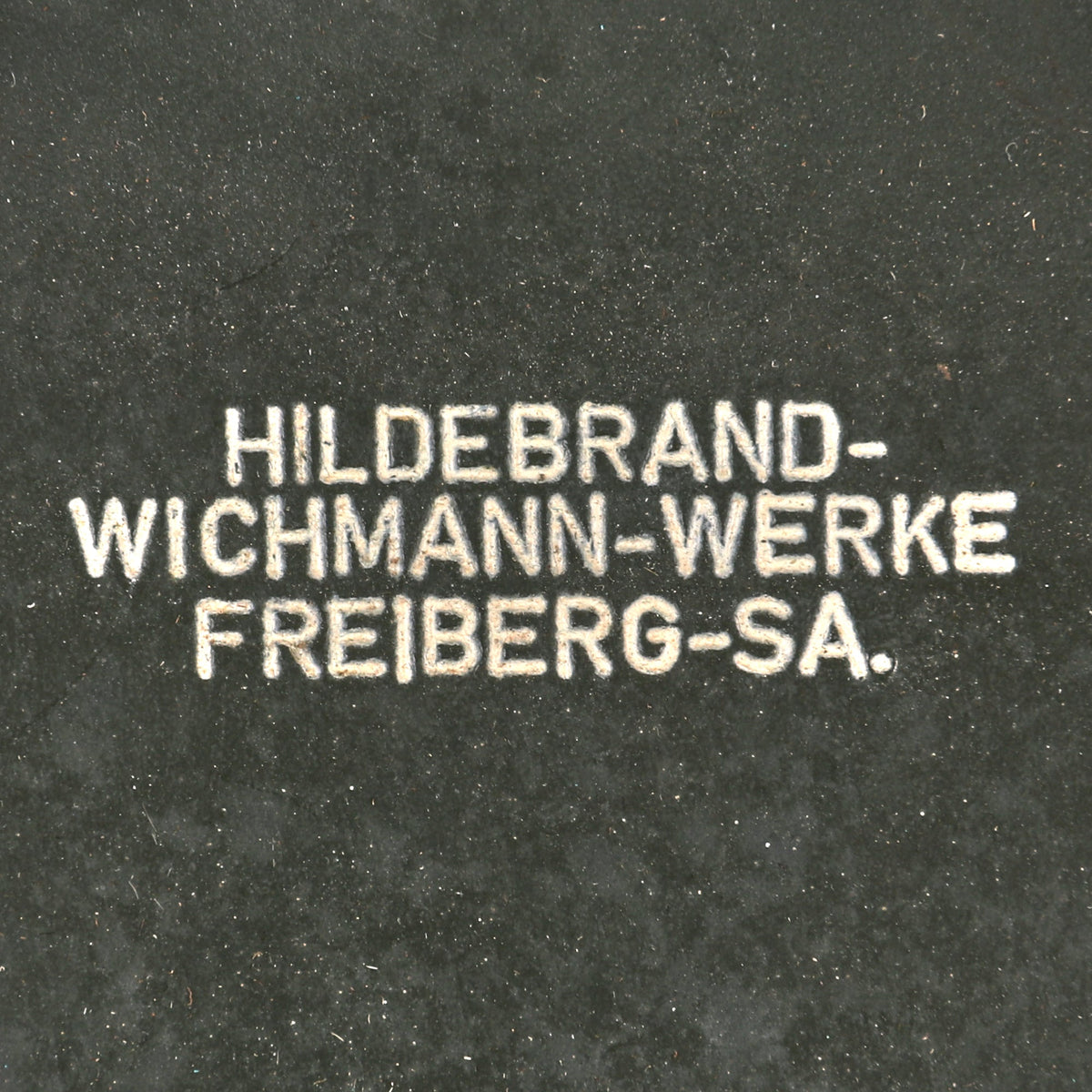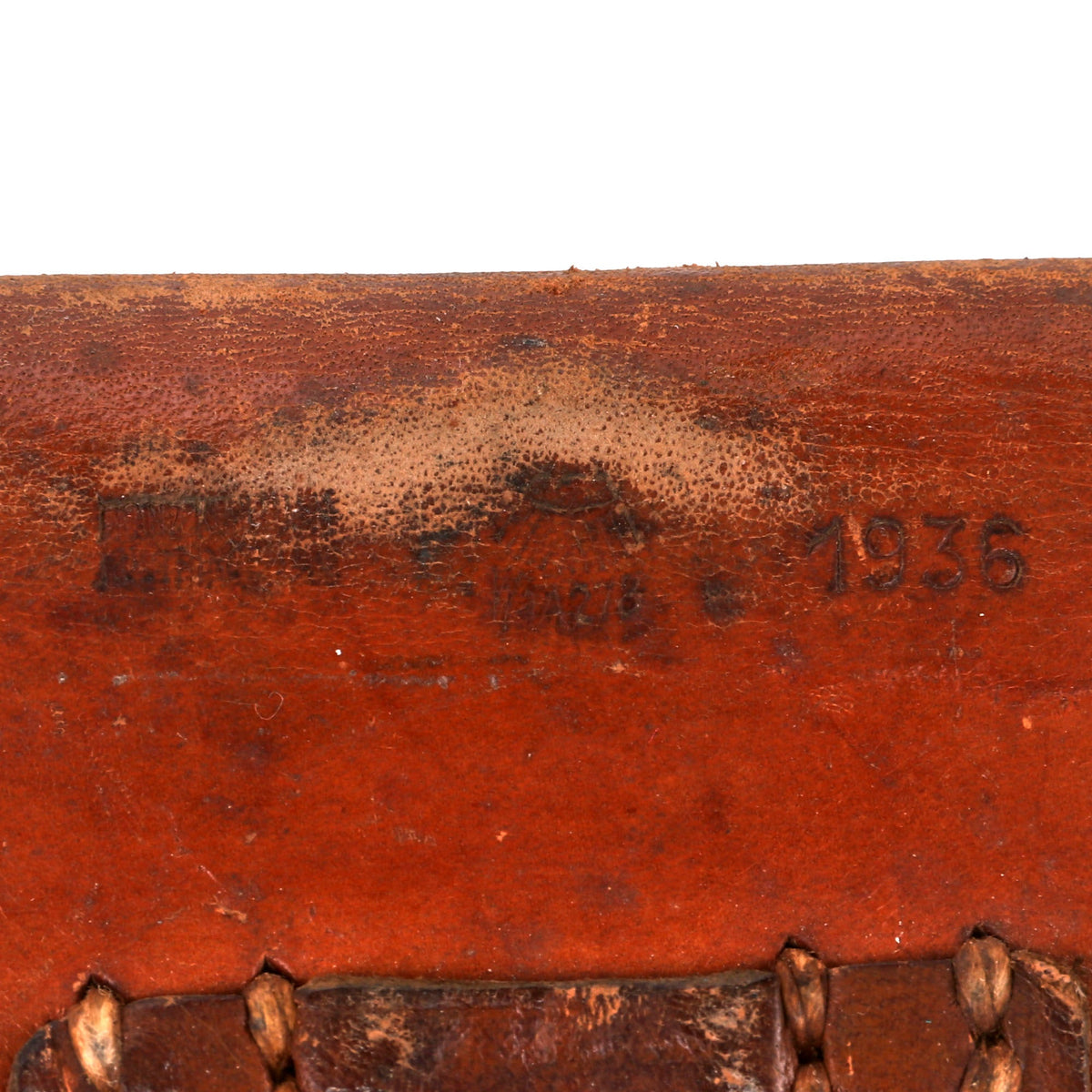Original German WWII German RK31 Richtkreis 31 Artillery or Mortar Trench Periscope Adapter With 1936 Dated Leather Case – Formerly Part of the A.A.F. Tank Museum Original Items
$ 495,00 $ 148,50
Original Item: Only One Available. This is a lovely example of the WWII German RK31 (Richtkreis 31) artillery / mortar fire trench periscope adapter. This device would have been attached to the standard scope to provide direct line of sight fire from a defense or entrenched position. The battlefield is viewed by the use of two opposing glass mirrors, one top, one bottom, held in a wooden case held together by twisted wire. A fairly crude design but it got the job done, and was cheap and easy to mass produce at the time.
The optic came to us from the American Armoured Foundation, Inc. Tank and Ordnance Memorial Museum. The AAF Tank Museum was a living memorial dedicated to the Tank and Cavalry soldiers of the world. Before 1981 some of the artifacts that make up the AAF Tank Museum was a private collection belonging to Mr. William Gasser. Mr. Gasser felt that his collection would be beneficial in educating present and future generations to the sacrifices made and the technologies gained during war. Therefore, in 1981 the AAF Tank Museum was established as a non-profit charitable organization, and Mr. Gasser’s donated his private collection to the Tank Museum. Mr. Gasser is still active as Volunteer Director and Curator of the Tank Museum and his knowledge of military history has been a great asset to the museum. Unfortunately after 20 years of operation it had to close its doors, which is when this sight was acquired.
The periscope is in very good condition, with the mirrors in great shape, just a little dirty. There is a bit of wear and some chipping in the paint on the housing, but that is to be expected on any item this age. The periscope does not appear to have seen much use and may have been “liberated” from a factory or stores building for military equipment.
The top still retains full markings:
HILDEBRAND-
WICHMANN-WERKE
FREIBERG-SA
146534
In 1873, Max Hildebrand became a business partner of August Lingke & Compagnie in Freiberg, Saxony. He had gained experience in Paris, England and in the world-famous Berlin workshop Pistor und Martins. For several years, the devices bore the brand name Hildebrand früher August Lingke, around 1880 it was changed to Hildebrand & Schramm.
The company, which manufactured a complete range of products, including mining measuring instruments and tools, under his leadership achieved an excellent position on the market. Let us recall the so-called Freiber ball, which allows the forced centering of the theodolite with an accuracy of 0.05 mm, or a repetitive mining theodolite. The company equipped the unsuccessful polar expedition of the Swedish airman Salomon August Andrée in 1897 with a precise theodolite.
During the crisis after World War I, the company Hildebrand-Wichmann-Werke was established in 1921 by merging with the well-known Berlin company. It had a wide range of production, including office and laboratory supplies. After 1950, the plant was called VEB Freiberger Präzisions-Mechanik (FPM).
The 1936 leather case is in wonderful condition and free of any real damage. There is verdigris buildup in some areas as well as staining on the leather but is otherwise offered in wonderful condition. The case still functions as intended and closes properly on the front.
A lovely set ready for further research and display.
Fast Shipping with Professional Packaging
Thanks to our longstanding association with UPS FedEx DHL, and other major international carriers, we are able to provide a range of shipping options. Our warehouse staff is expertly trained and will wrap your products according to our exact and precise specifications. Prior to shipping, your goods will be thoroughly examined and securely secured. We ship to thousands clients each day across multiple countries. This shows how we're dedicated to be the largest retailer on the internet. Warehouses and distribution centres can be located throughout Europe as well as the USA.
Note: Orders with more than one item will be assigned a processing date depending on the item.
Before shipping before shipping, we'll conduct a thorough inspection of the items you have ordered. Today, the majority of orders will be delivered within 48 hours. The delivery time will be between 3-7 days.
Returns
The stock is dynamic and we cannot completely manage it because multiple stakeholders are involved, including our factory and warehouse. So the actual stock may alter at any time. It's possible that you may not receive your order once the order has been made.
Our policy is valid for a period of 30 days. If you don't receive the product within 30 days, we are not able to issue a refund or an exchange.
You can only return an item if it is unused and in the same state as the day you received it. You must have the item in its original packaging.
Related products
Uncategorized
Uncategorized
Uncategorized
Uncategorized
Uncategorized
Uncategorized
Uncategorized
Armored Burgonet Helmet & Polearm from Scottish Castle Leith Hall Circa 1700 Original Items
Uncategorized
Uncategorized
Uncategorized
Band of Brothers ORIGINAL GERMAN WWII Le. F.H. 18 10.5cm ARTILLERY PIECE Original Items
Uncategorized
Uncategorized
Uncategorized
Uncategorized
Uncategorized
Uncategorized
Uncategorized
Uncategorized
Australian WWII Owen MK1 Machine Carbine SMG Custom Fabricated Replica with Sling Original Items
Uncategorized
Uncategorized













































































